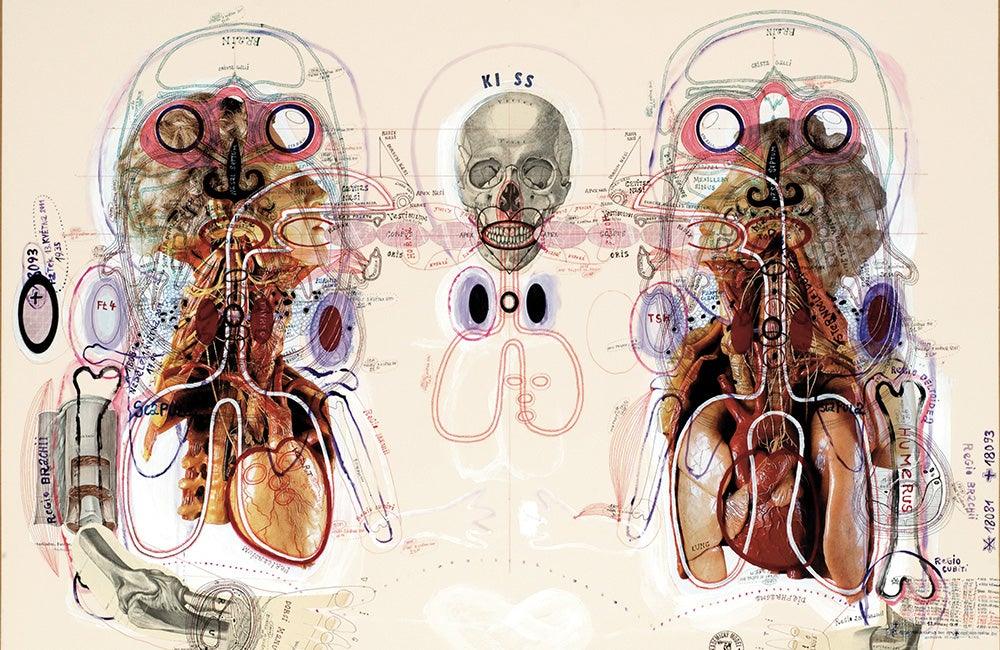First published: Spring 2014
At first sight, it is the word “anatomy” (according to the dictionary, the study, by dissection and other means, of the structure and form of living organisms and the relationship between their different organs) that best characterises the work of the Czech artist Lubos Plný. By the age of five he was drawing morphological and anatomical details, and he loved dissecting dead animals. His fascination for the body subsequently led him to attend autopsies and become a qualified grave digger.

However, Plný does much more than represent anatomical details of the human body. His works comprise heterogeneous elements from newspapers, fashion magazines, atlases and books on anatomy that he sticks on and reworks, covering with successive layers of acrylic or Indian ink. At the heart of these assemblages, faces of fashion models are transformed into masks, the notion of feminine and masculine disintegrates and the frontier between the human and the animal becomes blurred also.

Plný is certainly not the first to want to explore the inside of the human anatomy. It is doubtless the great “anatomist painter” Leonardo da Vinci (1452–1519) best represents the convergence of art and scientific interest in human anatomy. His works demonstrate that, in order to achieve this project, he proceeded section by section, slice by slice, stage by stage, taking advantage of his architectural knowledge and introducing the notion of thickness by the use of perspective.
Like his illustrious predecessor, Plný also uses sections – frontal projection or elevation, lateral projection – but, unlike da Vinci, he prefers to represent them and superimpose them in the same two-dimensional drawing, one on top of the other. He thereby creates a different kind of thickness, a kind of “skin” that renders any immediate interpretation virtually impossible and generates new secrets, replacing those that have just been unveiled by the dissection; the body thus finds its uncanniness.
This is an article extract; read the full article in Raw Vision #81




